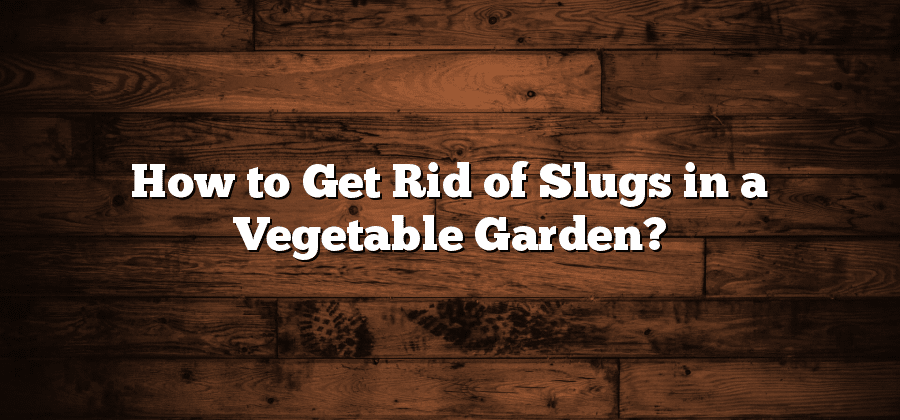Identifying Slug Infestation in Your Vegetable Garden
The presence of slugs in your vegetable garden can be concerning, as these slimy pests can cause significant damage to your plants. Identifying a slug infestation in the early stages is crucial for effectively managing the problem. One of the most obvious signs of slug activity is the presence of slime trails on the leaves and stems of your plants. These trails are shiny, silvery, and can be easily spotted, especially in the early morning when they are still wet. Additionally, keep an eye out for irregular holes and chew marks on the leaves, as slugs have a voracious appetite and can quickly devour your precious crops. Observing slugs themselves is also a clear indication of an infestation. These nocturnal creatures are most active during damp evenings or after rainfall, so taking a stroll through your garden at night with a flashlight might unveil their presence.
Properly identifying a slug infestation is essential for implementing effective control measures. By being vigilant and regularly inspecting your garden for slime trails, damage to leaves, and the presence of slugs, you can take prompt action to protect your vegetable crops.
Understanding the Lifecycle of Slugs
The lifecycle of slugs is an intriguing process that influences their presence and impact in your vegetable garden. By understanding their lifecycle, you can effectively implement control strategies to manage their population and minimize potential damage.
Slugs start their life as eggs, which are laid in moist soil or hidden in nooks and crannies around plants and garden structures. These eggs take about two weeks to hatch, depending on environmental conditions such as temperature and humidity. Once hatched, slugs emerge as tiny, translucent juveniles ready to feed and grow. They go through several growth stages, shedding their skin as they increase in size. Slugs are hermaphroditic, meaning that each individual has both male and female reproductive organs. They mate with other slugs and can store sperm for extended periods, enabling them to self-fertilize. This unique ability contributes to their rapid and adaptable reproductive capabilities. As they continue to grow and feed, slugs reach maturity in about six weeks and are capable of laying eggs, thus completing their lifecycle circle. However, it’s crucial to keep in mind that slugs have a high mortality rate due to factors like predation, environmental conditions, and human interventions, impacting the overall population dynamics.
Creating a Slug-Friendly Garden Environment
One of the key factors in creating a slug-friendly garden environment is providing the ideal conditions for them to thrive. Slugs are primarily found in moist and shady areas, so it is important to ensure that your garden has plenty of moisture and shade to attract these pests. Consider incorporating elements like damp soil or mulch, and plant foliage that provides shade. Additionally, avoid removing dead leaves or debris from your garden, as this can serve as a hiding place and food source for slugs.
Another aspect to consider when creating a slug-friendly garden environment is providing easy access to food. Slugs are particularly fond of fruits, vegetables, and tender plant leaves. To encourage slugs to visit your garden, plant a variety of their favorite snacks. However, be cautious not to plant too close to your prized plants, as slugs can quickly turn a lush green bed into a decimated mess. By offering a diverse selection of vegetation, you increase the likelihood of attracting slugs and keeping them well-fed within your garden.
Implementing Cultural Control Methods
Slugs can wreak havoc on your vegetable garden, but implementing cultural control methods can help minimize their impact. One effective method is to practice proper sanitation in the garden. This involves removing any debris, such as leaves or plant material, where slugs may hide during the day. Regularly cleaning up fallen fruits and vegetables will also discourage slug activity. Additionally, keeping the garden free from weeds and dense vegetation will eliminate potential hiding spots for slugs, making it harder for them to thrive.
Another important cultural control method is to monitor soil moisture levels. Slugs thrive in moist conditions, so it’s crucial to avoid overwatering your garden. By ensuring proper drainage and allowing the soil to dry out between waterings, you can create an inhospitable environment for slugs. Additionally, watering in the morning rather than the evening will allow the soil surface to dry throughout the day, further deterring slug activity. Remember, prevention is key when it comes to cultural control methods, so maintaining a dry and clean garden will go a long way in keeping slugs at bay.
Utilizing Physical Barriers to Deter Slugs
One effective method for deterring slugs in your vegetable garden is by implementing physical barriers. These barriers act as a barrier that prevents slugs from accessing your precious plants and causing damage. Physical barriers can take various forms, such as copper tape, diatomaceous earth, and eggshells.
Copper tape is a popular choice among gardeners as it creates a mild electric current when in contact with slime, deterring slugs from crossing the tape. Diatomaceous earth, on the other hand, is made from fossilized remains of marine organisms and has sharp, abrasive edges that slice through a slug’s body, causing dehydration and death. Moreover, crushed eggshells can be scattered around the plants to create a barrier that slugs find difficult to crawl over. By utilizing these physical barriers strategically, you can effectively protect your vegetable garden from slug infestation.






